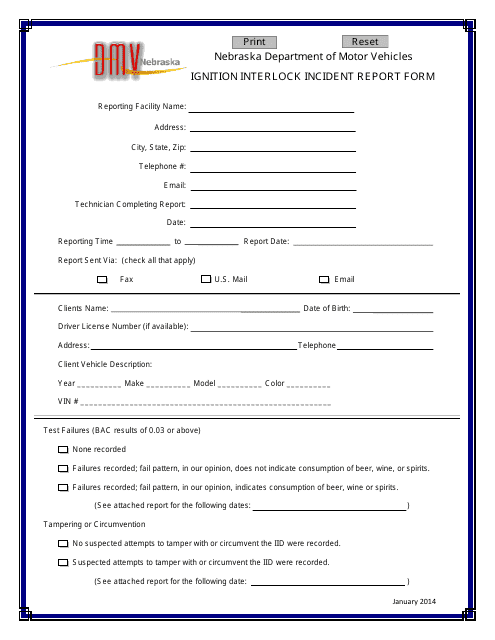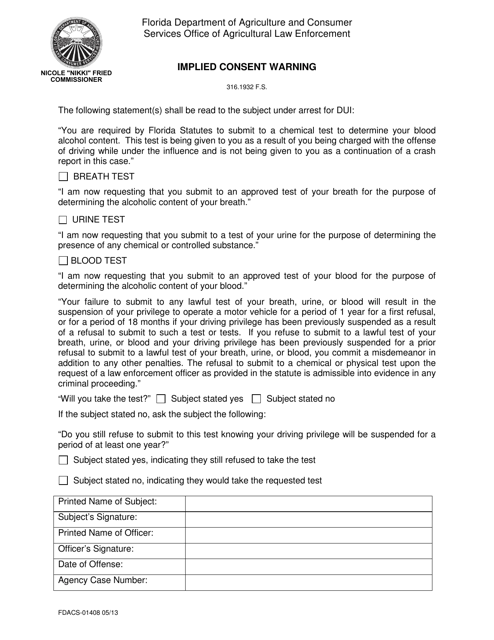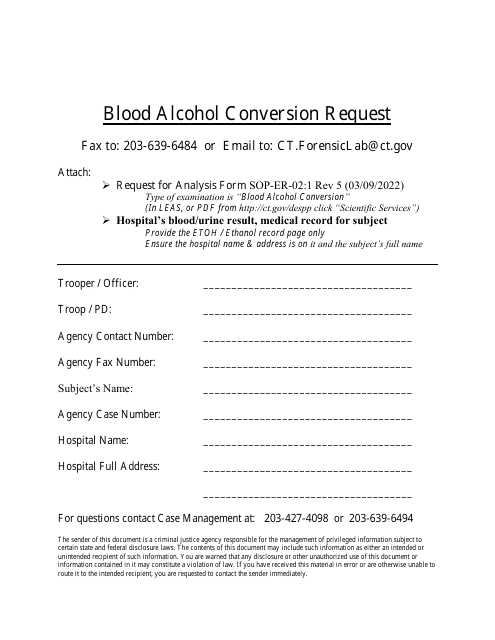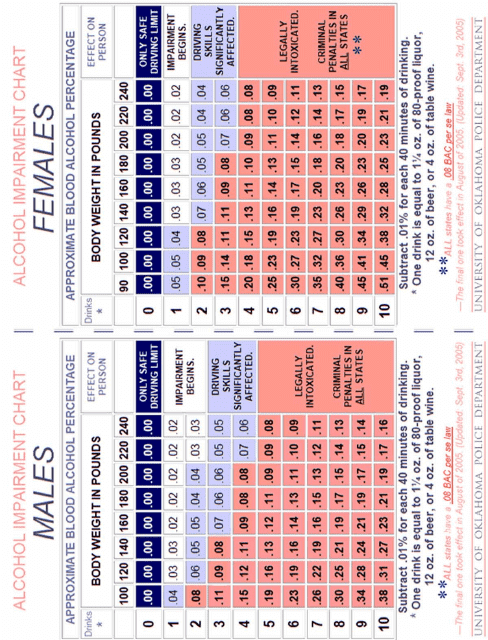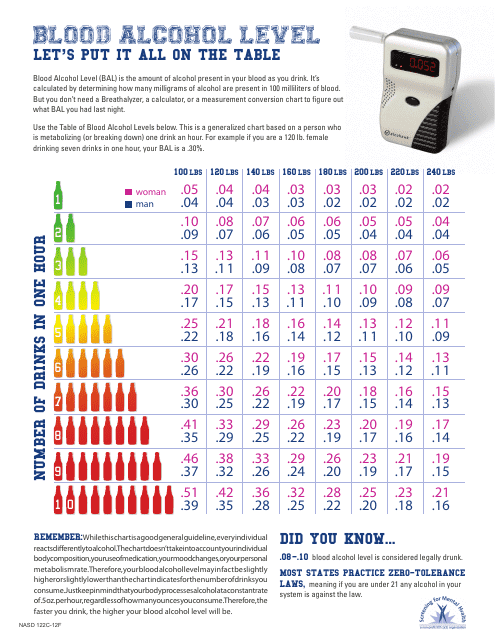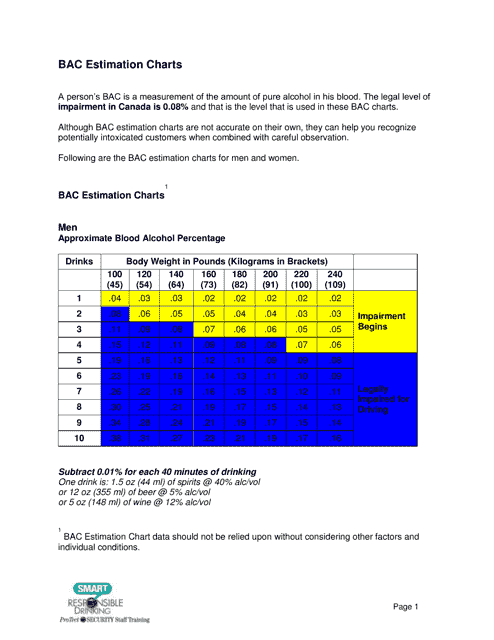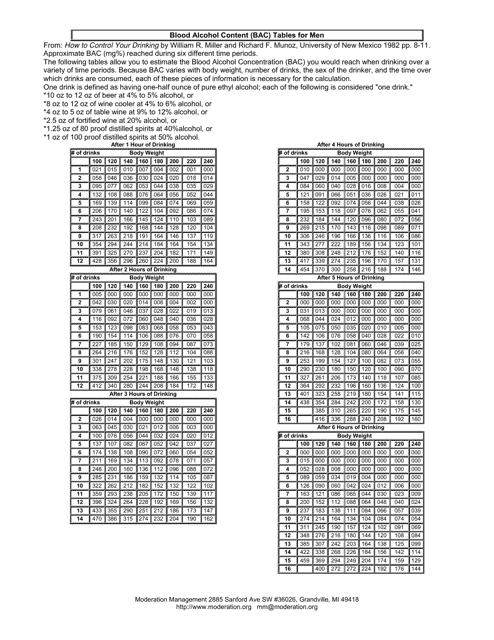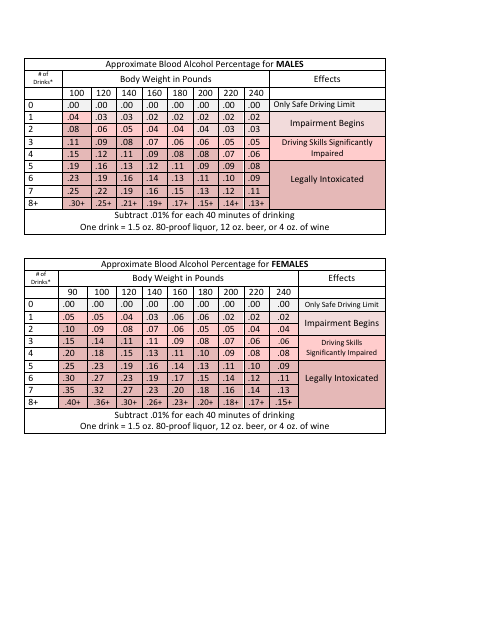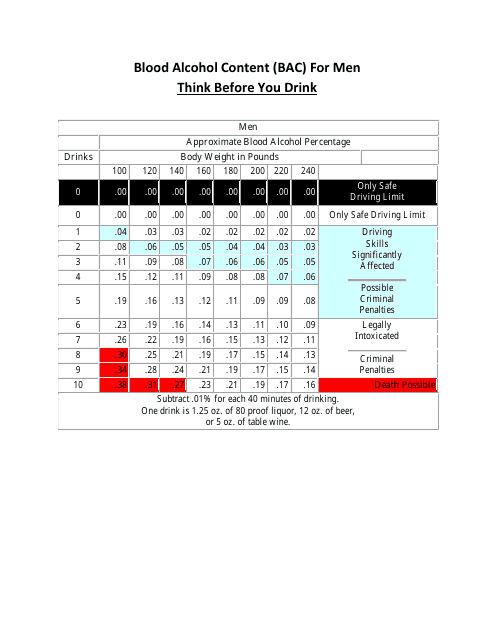Blood Alcohol Content Templates
Blood Alcohol Content (BAC) is a crucial measure of the amount of alcohol present in a person's bloodstream. Understanding BAC levels and their implications is essential for maintaining road safety, ensuring responsible alcohol consumption, and making informed decisions about one's physical and mental state.
Our comprehensive collection of documents, known as the Blood Alcohol Content Chart, offers valuable insights into BAC levels and their effects. Whether you're a law enforcement officer, a healthcare professional, or simply someone seeking knowledge, our BAC resources provide valuable information to help you navigate the complexities of alcohol consumption.
The Blood Alcohol Content Chart includes a wealth of informative documents, such as the Ignition Interlock Incident Report Form, which assists authorities in maintaining public safety and tracking incidents related to drunk driving. Additionally, our collection features the Stages of Intoxication Chart, shedding light on the various levels of impairment that accompany different BAC levels.
For those curious about estimating their own BAC, we offer tools like Bac Estimation Charts and Approximate Blood Alcohol Percentage Charts. These resources enable individuals to make educated decisions regarding their alcohol consumption and understand the potential impact on their cognitive and physical abilities.
Whether you're an individual seeking knowledge or a professional in law enforcement or healthcare, our Blood Alcohol Content Chart is an invaluable resource. Stay informed, make responsible choices, and contribute to a safer and healthier community by utilizing our extensive collection of BAC-related documents.
Documents:
13
This document provides a conversion chart for blood alcohol levels, helping to determine the corresponding level based on different measurements.
This Form is used for reporting incidents related to ignition interlock devices in Nebraska.
This form is used in Florida to provide the implied consent warning to individuals suspected of driving under the influence (DUI). The form explains the consequences of refusing to submit to a breath, blood, or urine test when arrested for DUI.
This document is used for maintaining a record of calibration for the Alco-Sensor Fst device in North Dakota.
This form is used for requesting the conversion of blood alcohol content (BAC) test results in Connecticut.
This document provides a chart that illustrates the effects of alcohol impairment on a person's motor skills, judgment, and coordination. It serves as a visual guide for understanding the level of impairment based on blood alcohol concentration (BAC) levels.
This document provides a chart that shows the estimated blood alcohol content (BAC) levels based on the number of drinks consumed over a specific period of time.
This chart illustrates the stages of intoxication. It provides information on the different levels of impairment based on blood alcohol content (BAC) levels.
This chart shows the estimated blood alcohol content (BAC) levels for women based on the number of drinks consumed over time. It helps to assess the level of alcohol in the bloodstream and its effects on the body.
This document provides estimation charts for calculating the blood alcohol content (BAC) based on various factors such as weight, number of drinks, and time elapsed. It helps individuals understand the approximate level of intoxication based on their alcohol consumption.
This document provides tables to calculate blood alcohol content (BAC) based on the number of drinks consumed and the person's weight. It helps determine the level of alcohol in the bloodstream.
This document provides approximate blood alcohol percentage charts that can help to estimate one's level of intoxication based on their weight, number of drinks consumed, and the amount of time passed since their last drink.
This document provides a detailed guide outlining the potential impacts of various alcohol quantities on a man's blood alcohol concentration level by weight. Effective for understanding the relation between alcohol consumed and its effect on the body.


